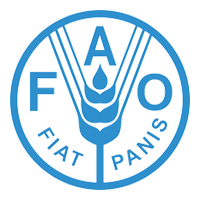Gathering of Wild Food Plants in Anthropogenic Environments across the Seasons: Implications for Poor and Vulnerable Farm Households.
This article presents the results of a study conducted in Northeast Thailand on wild food plant gathering in anthropogenic areas and the implications for vulnerable households. A sub-sample of 40 farming households was visited every month to conduct seven-day recalls over a 12-month period on wild food plant acquisition events. Results show that these plants are an essential part of the diet, constituting a "rural safety net" particularly for vulnerable households. Findings reveal that anthropogenic environments have seasonal complementarity throughout the year with respect to wild food gathering and farmer's gathering of wild food plants from anthropogenic environments complements seasonal crop availability. This study contributes to a deeper understanding of these plants as a household asset and their potential contribution to household well-being. The results of this study furthers our understanding of dietary traditions and the scientific challenge of the partitions that have for decades divided agriculturalists and gatherers.
Related Resources
Postharvest innovation in developing societies: The institutional dimensions of technological change
This review aims to introduce the institutional and policy oriented literature on technological innovation into the context of postharvest engineering. The focus is how rigorous quality and food safety standards in cross-border agricultural and horticultural trade influence technological change up...
Science and Technology in Civil Society Innovation Trajectory of Spirulina Algal Technology
The role of civil society in influencing public opinion towards more democratic and developmental approaches is now well-recognised in diverse fields such as health, education, livelihoods, issues relating to disadvantaged social groups and the environment. Yet, science and technology in...

Extreme temperatures and violence Making the most of climate impacts ensembles

One of lead papers presented at: Innovation Asia-Pacific Symposium: 4-7 May, 2009 Kathmandu, Nepal.

Unravelling institutional determinants affecting change in agriculture in West Africa
This paper compares lessons learned from nine studies that explored institutional determinants of innovation towards sustainable intensification of West African agriculture. The studies investigated issues relating to crop, animal, and resources management in Benin, Ghana, and Mali


